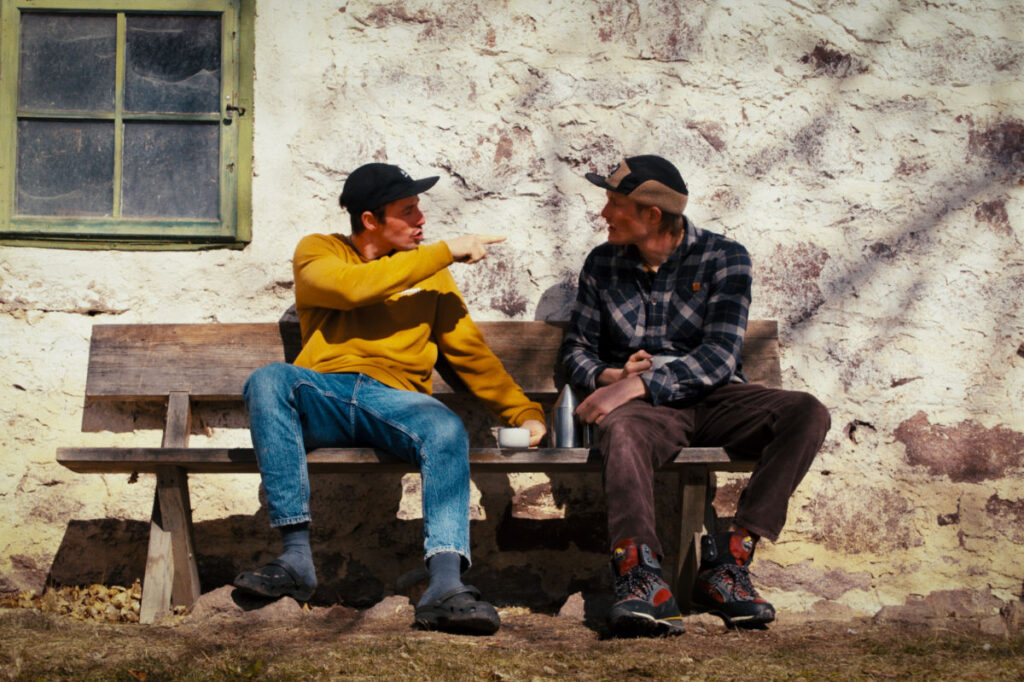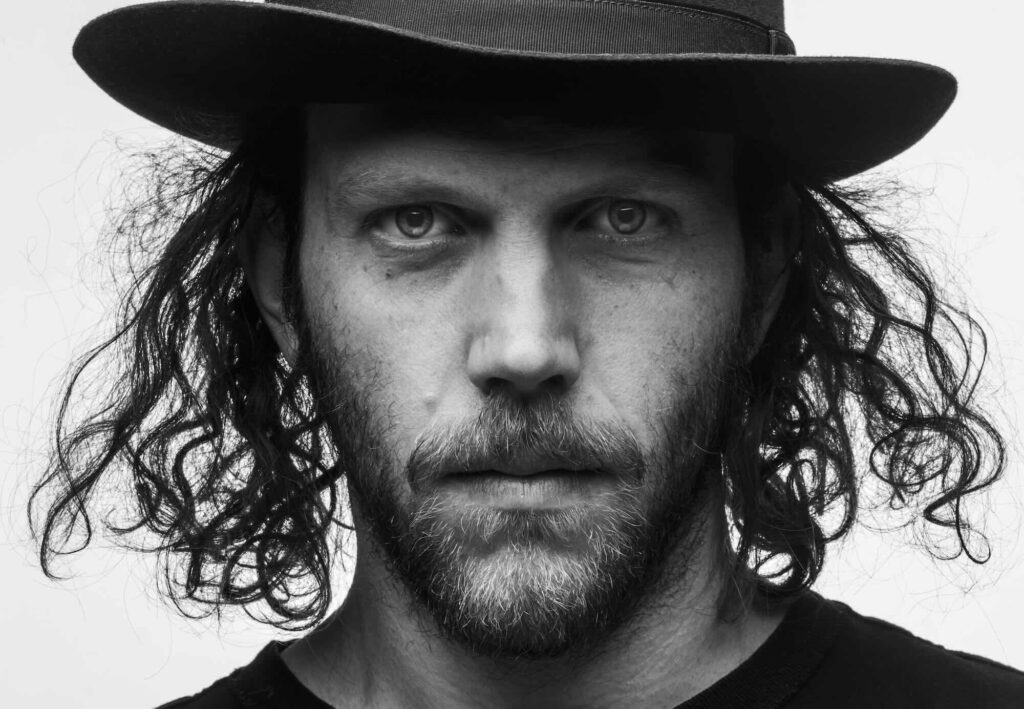
Marco Tribelhorn: “Through trust, I was able to draw out these bizarre things from them.”
In “The Red-Face Zone”, Jakob and Matthias Weger throw themselves into the gnarliest couloirs in the Dolomites with ski and snowboard. The ironic psycho-thriller’s background story involves flushed red faces and a strange illness. Director Marco Tribelhorn explains how this quirky film came to be.

How did the idea for The Red-Face Zone come about?
Marco Tribelhorn: Matthias and Jakob wanted to create a film that was more suited to festivals. Their basic idea was that you have to be really angry to ski a certain “zone” in the Dolomites. They asked me if I could imagine being part of such a project and investing time, as there was no funding yet. I said yes, because I found the idea interesting, especially the fact that it would involve scenes resembling a feature film, and we still had to invent a story to go along with it.
How did the project unfold?
We started by philosophizing, lamenting, and discussing what the story should be, and how the whole thing could be implemented – focusing on scenes and images. We brainstormed various ideas about why someone would be so angry: Should it be an illness? Or simply irritation? Or perhaps they could catch it from other people or animals? There were many possibilities. Then we narrowed it down and decided to first film the action sequences because that’s what we do best, and we knew exactly what we wanted there. From that, we could decide how the acting part and the story should unfold. We filmed the skiing scenes in January and shot the story scenes at the end of March.
How difficult was it to motivate the two to try acting?
I didn’t have to motivate them much because, in the core concept, it was clear they had to act in some way – otherwise, the whole thing wouldn’t make sense. So, the motivation likely came from them. And with acting, it’s always about giving people self-confidence. I think that helps the most.
TERMINE UND TICKETS FÜR DAS FFF 2024
What tricks did you use to really draw them out of their comfort zone as actors?
Essentially, I tried to describe to them as accurately as possible my vision of the emotions, moods, and feelings we needed – that means, the mental and physical state we wanted to depict. Then we just started filming. If something didn’t fit, I made small adjustments. That was the basic approach. As far as I can remember, they trusted me a lot in that regard.
How did you get the rather wild scenes?
It was through this trust that I could pull out these somewhat bizarre actions from them. The trick was to motivate them to take the acting seriously, but when it got really extreme, to stop taking it too seriously and see it in a positive and relaxed way. They shouldn’t overthink and question, “What am I doing? I’m shouting like crazy in the garden here!” I wanted them to just do it and not find it too odd to create that situation.
The action sequences are especially spectacular. What were the biggest challenges there?
For me, that was the least challenging part – purely from a filmmaking standpoint, because I think I’ve got a good handle on that by now. The biggest difficulty during the shoot was that there was not only me with the camera but also a drone and a race drone. I had to coordinate everything and take charge as the director, saying, “This is how I want it, and you do that now.” ‘And of course, we didn’t want to constantly get in each other’s way. But not everyone is as “picky” as I am, because ideally, I’d prefer that no camera is visible in any scene. Even a POV camera (point-of-view camera, like a helmet cam) annoys me, and I find it very unattractive. But sometimes, you can’t avoid that.
What else was a factor during the shoot?
Besides that, it’s all about dealing with the equipment in the cold. You also have to hike up the mountains and assess the avalanche situation well. You want to get into the danger zone because you want to capture these shots up close, but you still need to be safe. And then, it’s also a matter of mental and physical endurance, just sticking it out – and being patient.
Have you developed a taste for making more feature-film-like productions?
Yes, definitely. I really enjoyed it, especially working out the scenes. It’s a process to write something, figure out what you want – and then actually film it. What I hadn’t realized – even though we structured and shot the scenes relatively carefully – was how much work it is to piece everything together into a finished film. From the first images in your head to what eventually appears on the screen. I also did all the sound design myself because I always do everything myself. It was exciting and intense. And it’s always cool to work with people, whether they’re amateur actors like Jakob and Matthias or creative collaborators. It was all a lot of fun.
Ähnliche Artikel
22.10.2024
Griffin Glendinning: “Svea Irving had never been filmed in the backcountry before”
"Stasis" is a mystical, melancholic portrait of Svea Irving, who competes for the US national team in the halfpipe. The film showcases her experiences in the wilderness and in nature in a cool and abstract way. In this interview, director... more15.12.2021
Worldwide Show: Winning made easy
Our Worldwide Show on 16 December not only offers an exciting, entertaining film programme. The exclusive prizes we are giving away online are also really something special. https://vimeo.com/640954940 Everyone can win When... more03.12.2021
Get ready for the FFF Worldwide Show on 16 December 2021
We will do it again! After our first live stream event in December 2020 was such a great success, we are going global again with the FFF Worldwide Show. The start is on December 16, 2021 at 7 p.m. (CET). The tickets are available in three... more